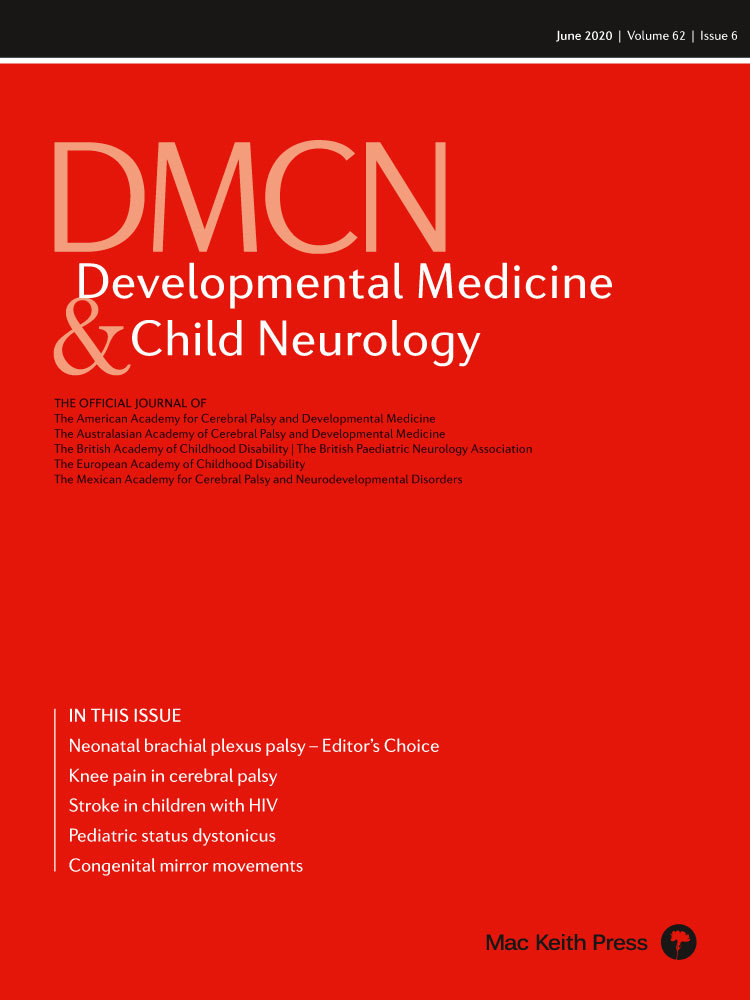Vein of Galen malformation: beyond life or death
Abstract
This commentary is on the original article by Taffin et al. on pages 729–734 of this issue.
A cornerstone of paediatric neurological practice is to advise on prognosis and contribute to the risk versus benefit evaluation of interventions in a range of early onset, potentially treatable disorders. However, the decision-making paradigms used in vein of Galen malformation (VGM)—a previously lethal condition, now potentially curable with high-risk embolization—have been somewhat unusual. Historically, the Bicetre score, an indicator of systemic organ dysfunction, was used to triage patients.1 Its categories (emergency embolization, delayed embolization, no treatment) were pragmatic and intended to give some indication of survivability at a time when there were very few clinicians able to treat these children who sometimes needed to be transported long distances. However, as discussed by Taffin et al.,2 this categorization is no longer current and has been superseded by more conventional approaches.
Beyond survival, few groups have examined longer-term outcomes in treated VGM, nor its predictors or correlates. As in many conditions involving early brain injury, a key finding of Taffin et al. was that neurocognitive difficulties emerged with age that were not apparent earlier. Unfortunately, there were few predictors of outcome; although in this and other cohorts, severe cardiac failure and supra-systemic pulmonary artery pressure unsurprisingly predicted death. Imaging correlates of outcome were not examined in detail and it is important to note that a proportion of children with abnormal imaging will be unimpaired.3 This paper adds to the body of literature highlighting the importance of long-term evaluation and the concept of emergent deficits in children with static brain injury. The practical significance of this is that early focus is on survival, then on relatively gross, usually motor, milestones. By the time impairments in higher level functions emerge (e.g. in executive function), the child is often not engaged with medical services and could struggle to achieve their potential.
While the Bicetre group present their institutional guidelines, their approach is not universally adopted in the interventional neuroradiology community. Currently, a multidisciplinary approach is advocated, incorporating brain imaging and aligned with decision-making paradigms in other paediatric conditions (e.g. congenital cardiac disease), and incorporating intensive care as well as cardiac, genetic, and paediatric care. The potential to manipulate endovascular treatment—other than its timing or management of hydrocephalus—is limited. There is, however, potential to manipulate physiological parameters especially in intensive care. Thus, a better understanding of factors that need to be controlled aggressively (e.g. blood pressure in the acute phase) could inform the overall management approach.
Power is a major issue in study of rare diseases and there is potential for important biases in sample selection. One striking feature of these data are the relatively small proportion of the whole group who were recruited; presumably due to the requirement of having at least one Francophone parent. In other settings, the economics of accessing treatment will influence the demographics of the cohort.
Finally, local antenatal care policies would influence the proportion of patients identified in utero versus having an early symptomatic presentation; certainly the proportion diagnosed antenatally reported here was much higher than that in the UK.
While individual clinicians may be reluctant to alter their decision-making, a registry of all cases (including those where pregnancy was terminated or death occurred in utero) with a standardized and systematized analysis of imaging, particularly incorporating advanced imaging techniques, is likely the only way to make real progress in understanding this disease and the factors influencing outcome. Moreover, an agreement about a standardized and comprehensive neurocognitive assessment protocol would enable some meaningful conclusion to be made about outcome that would be invaluable in counselling families.




